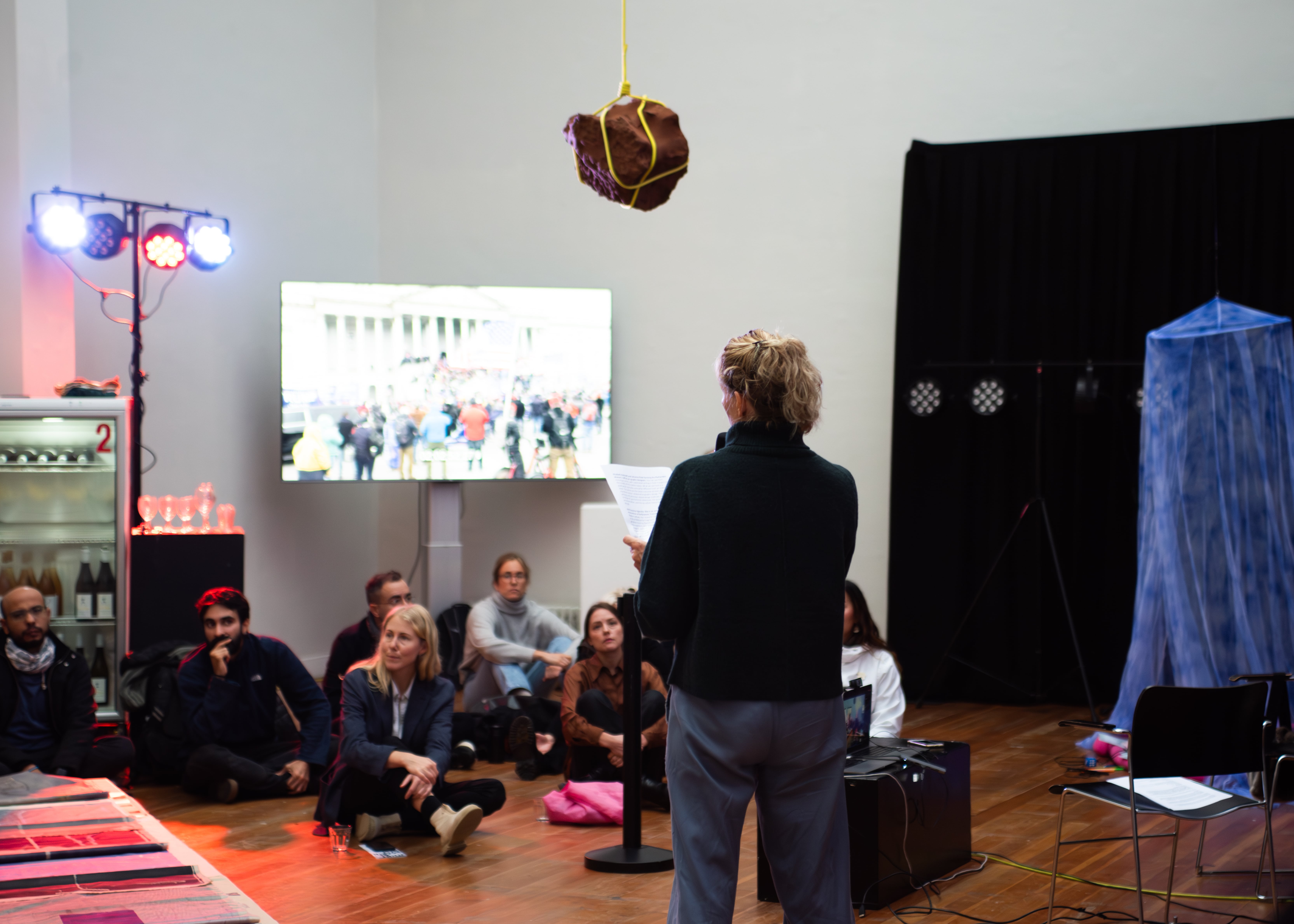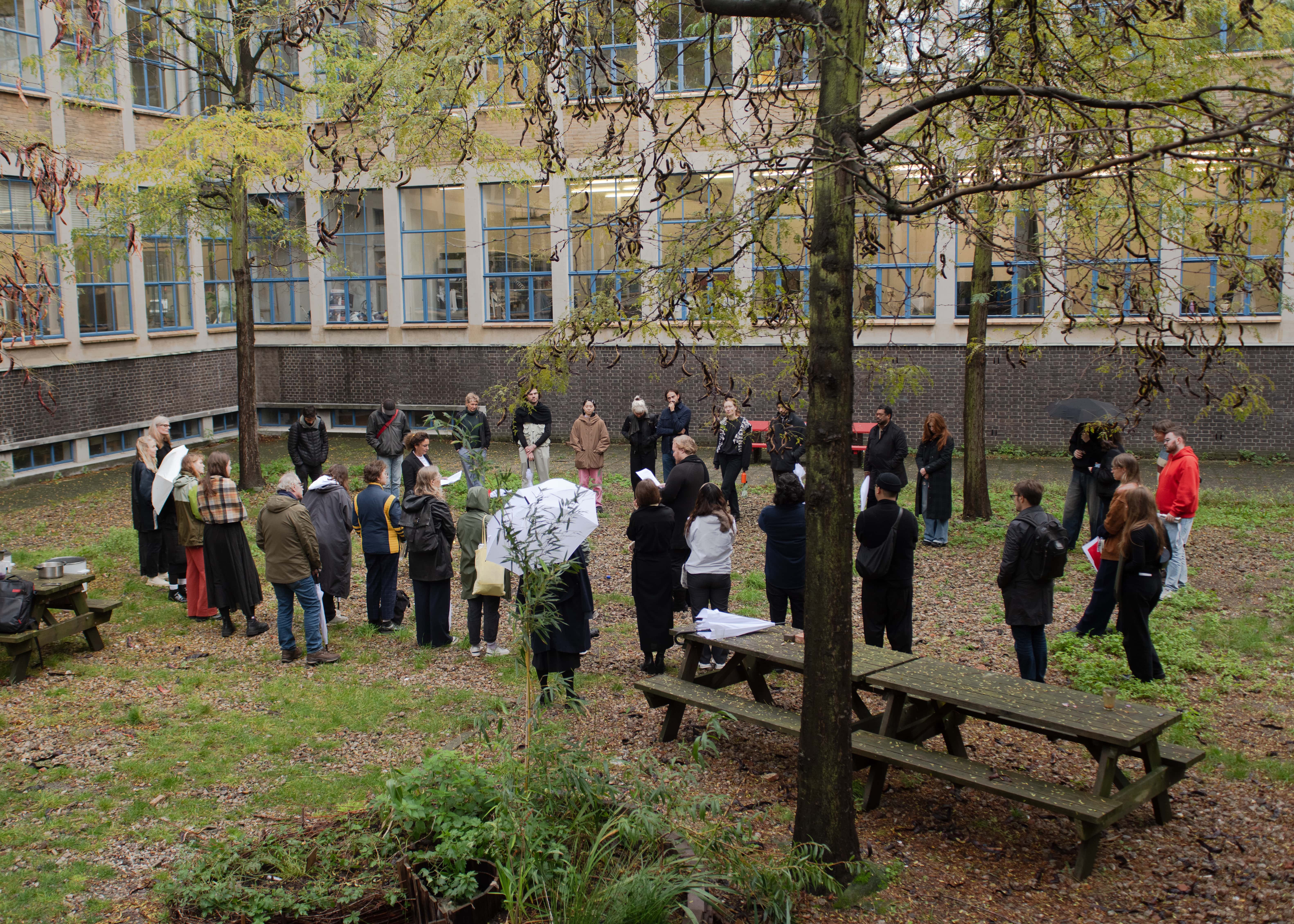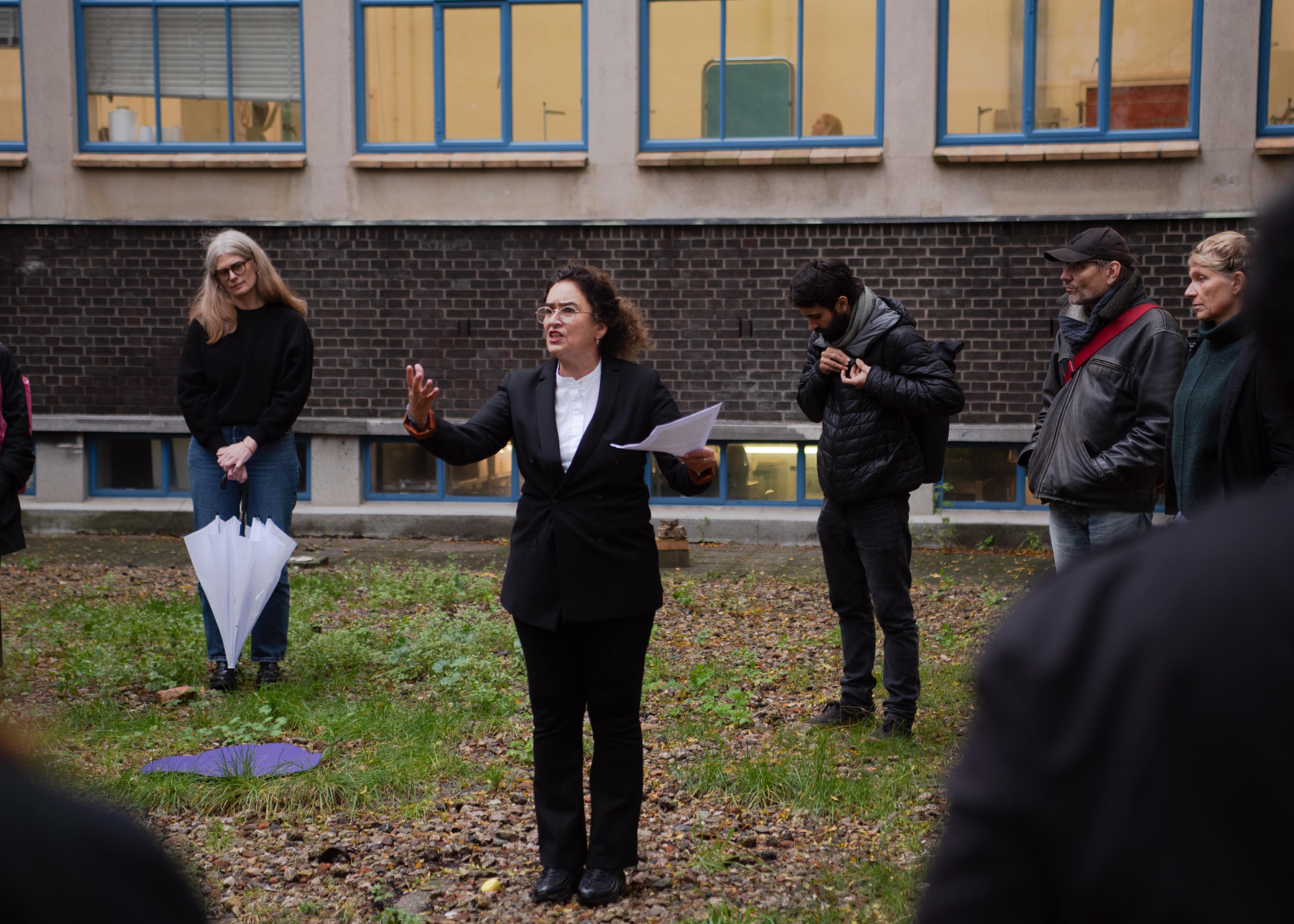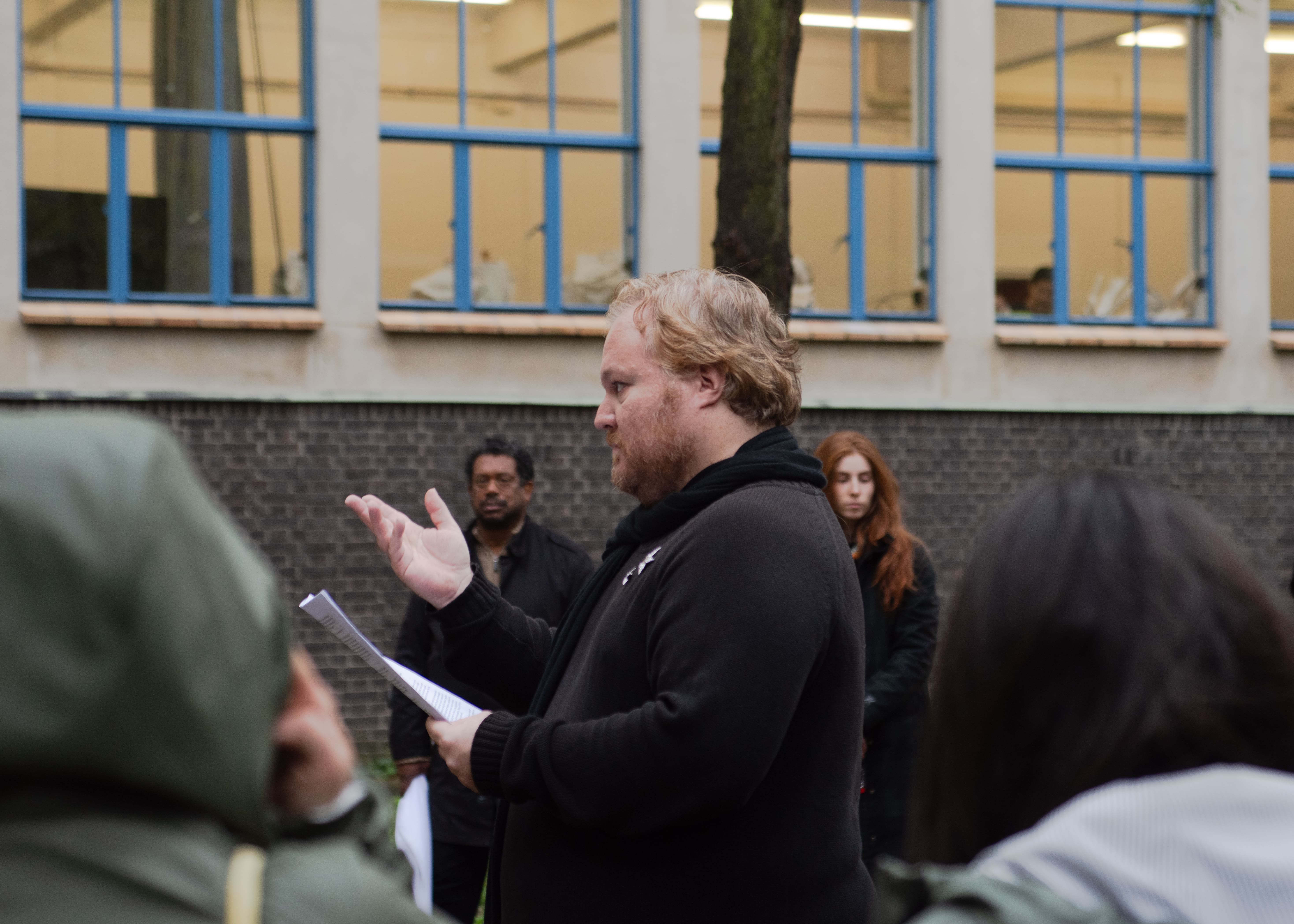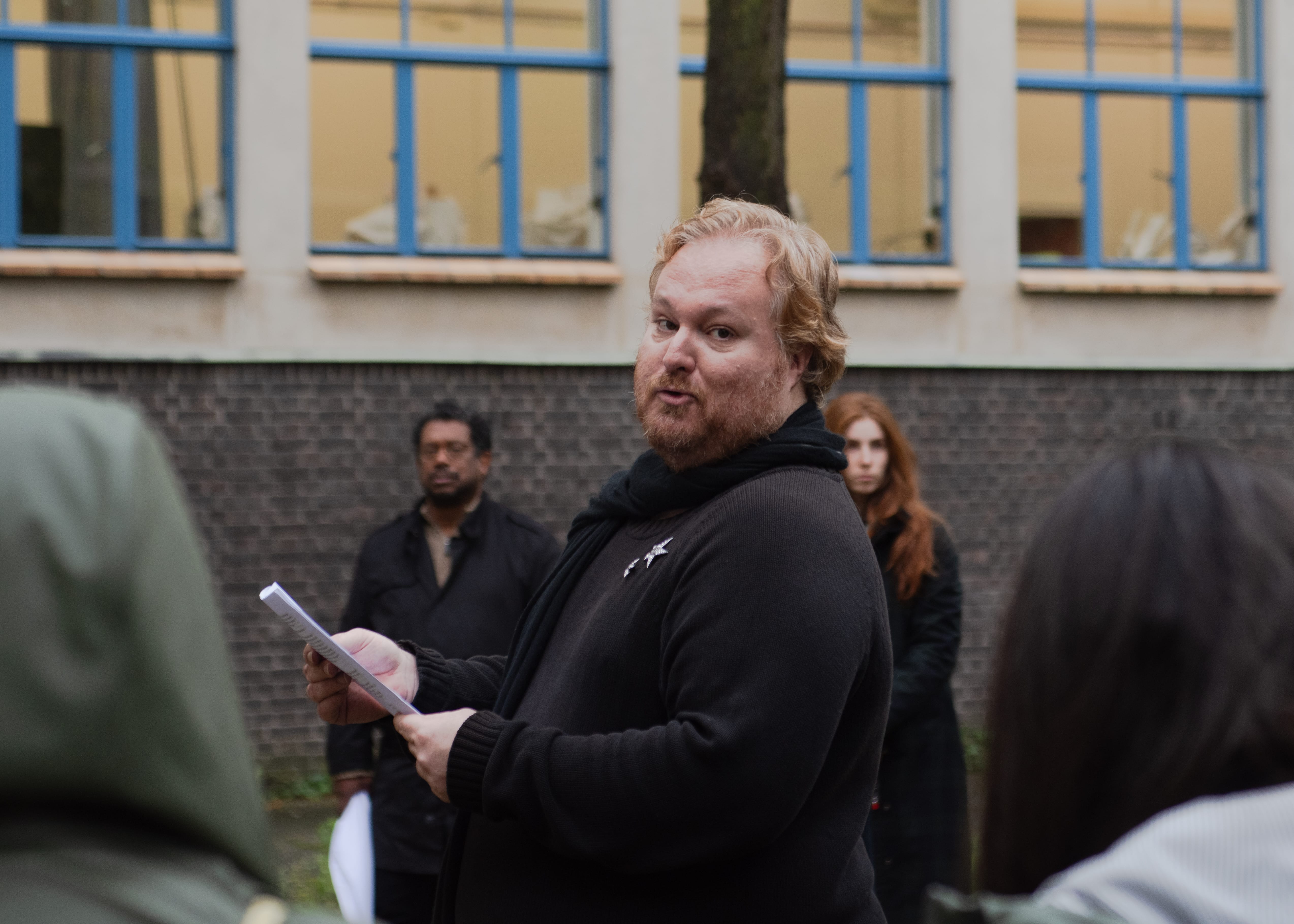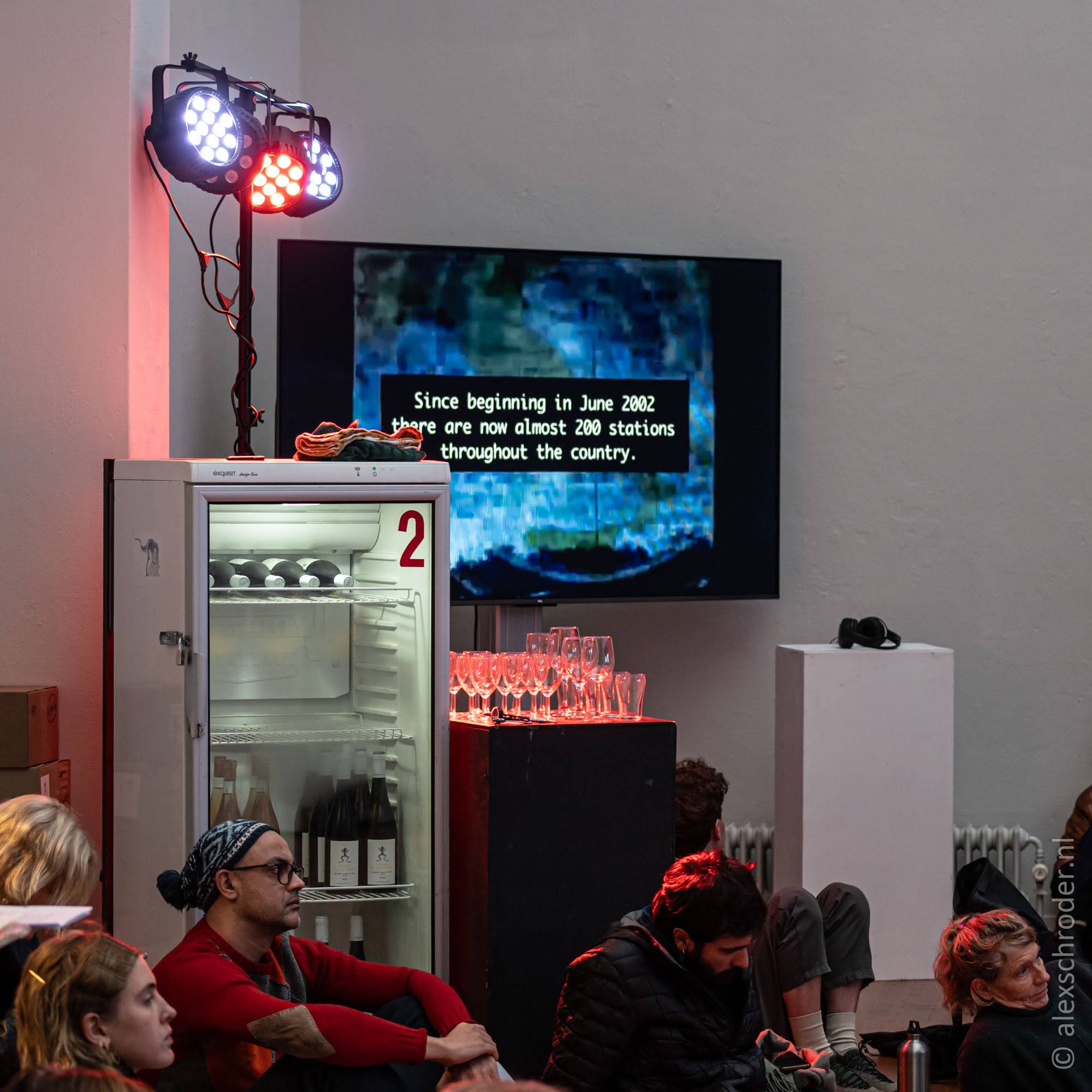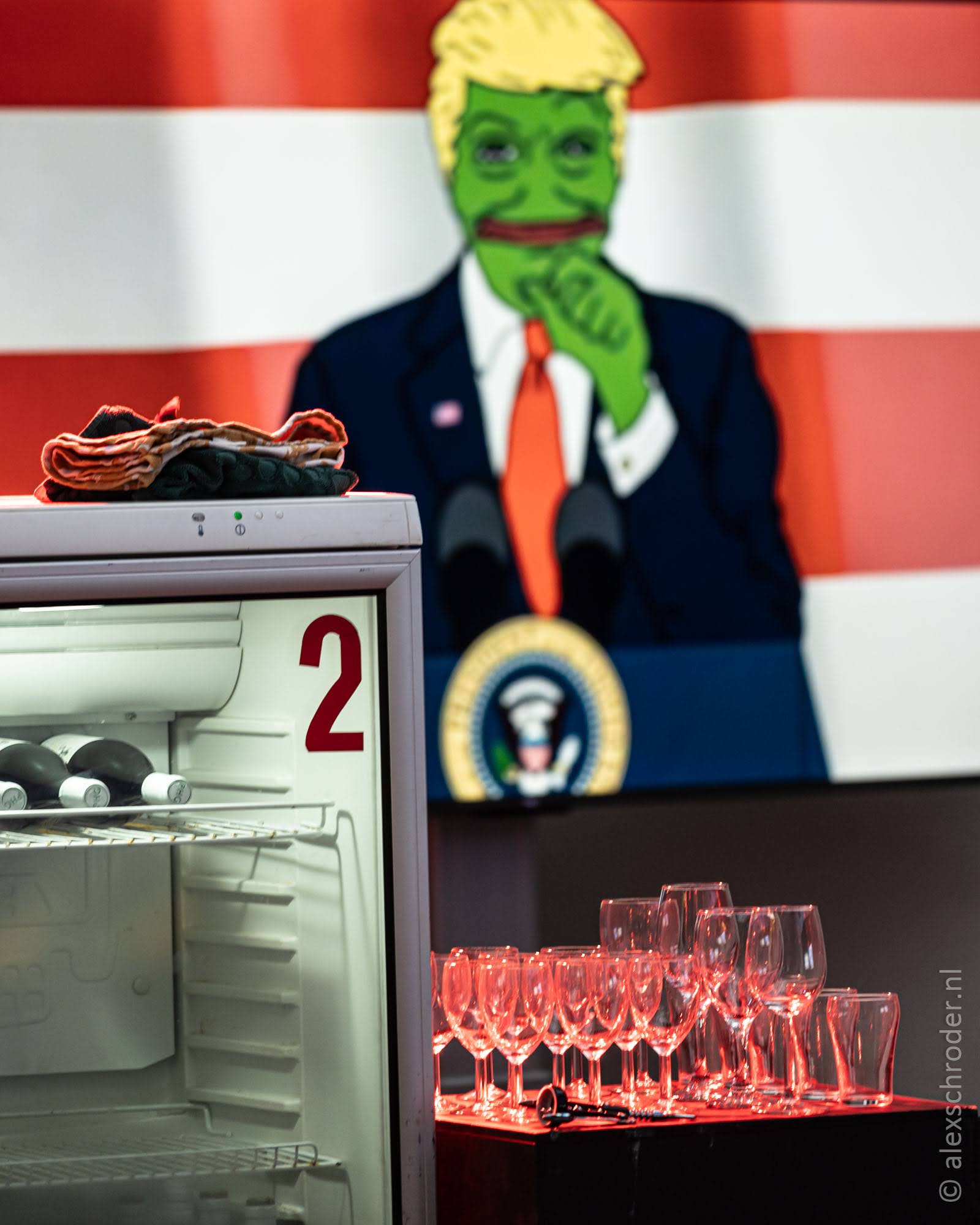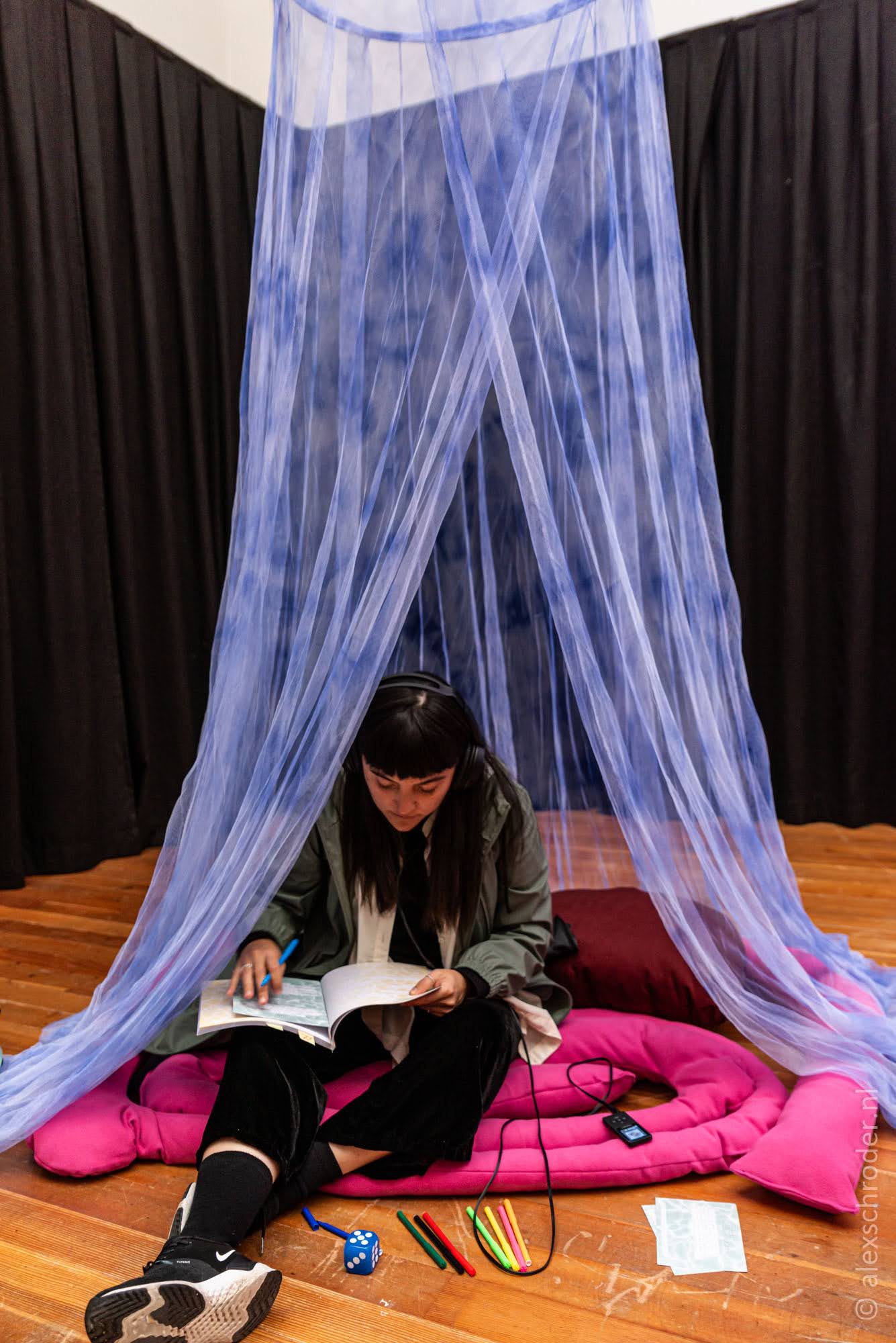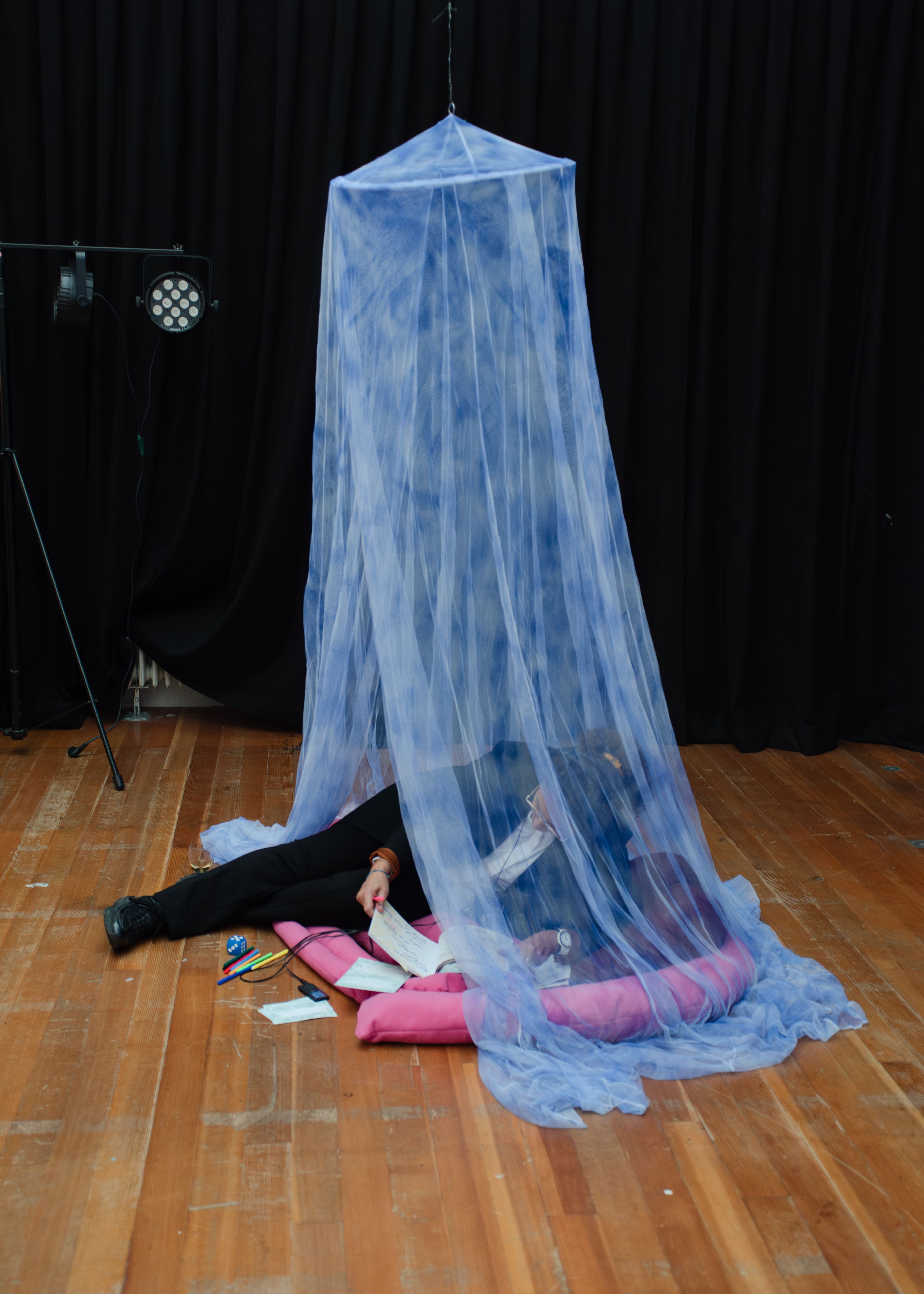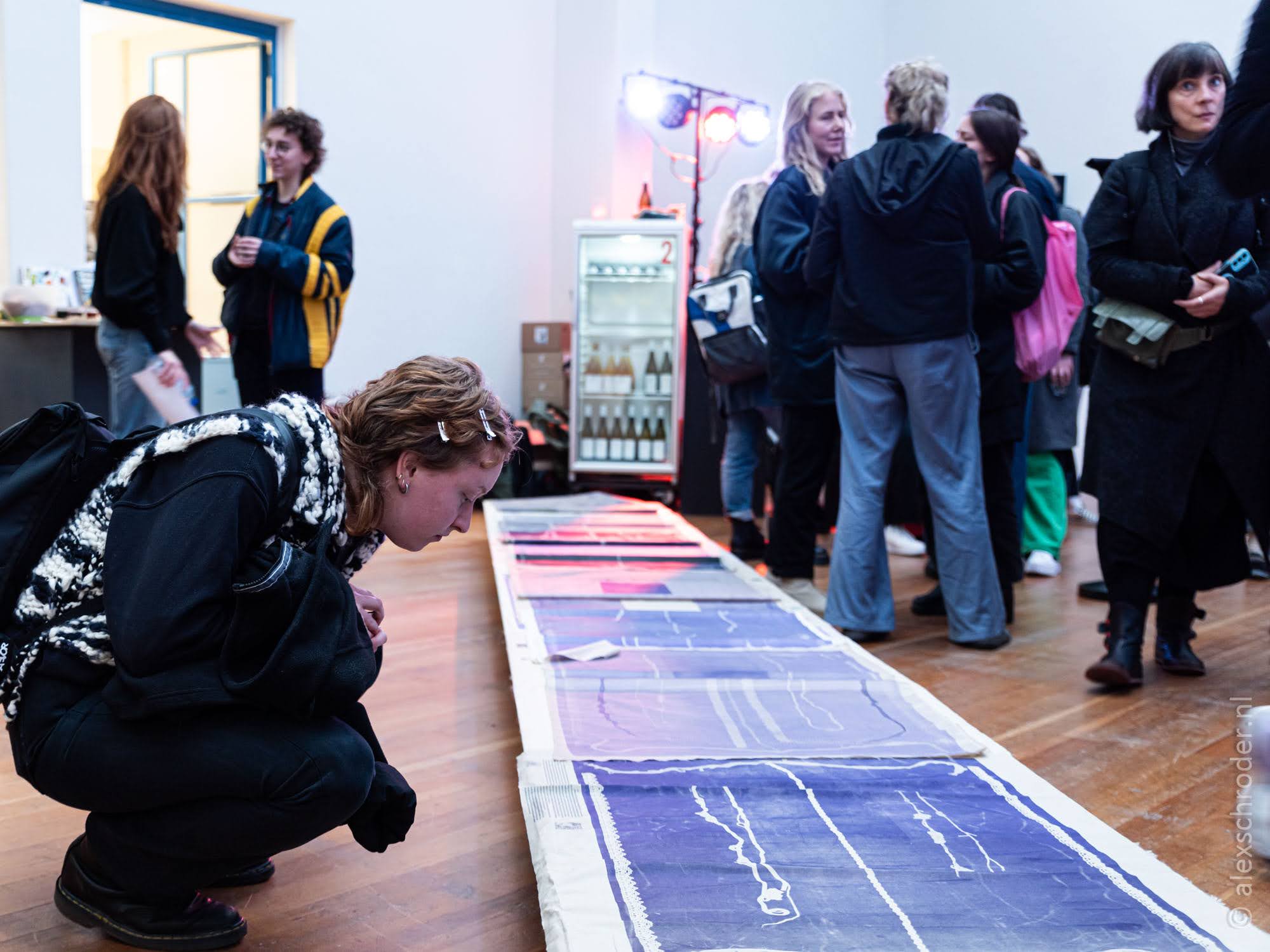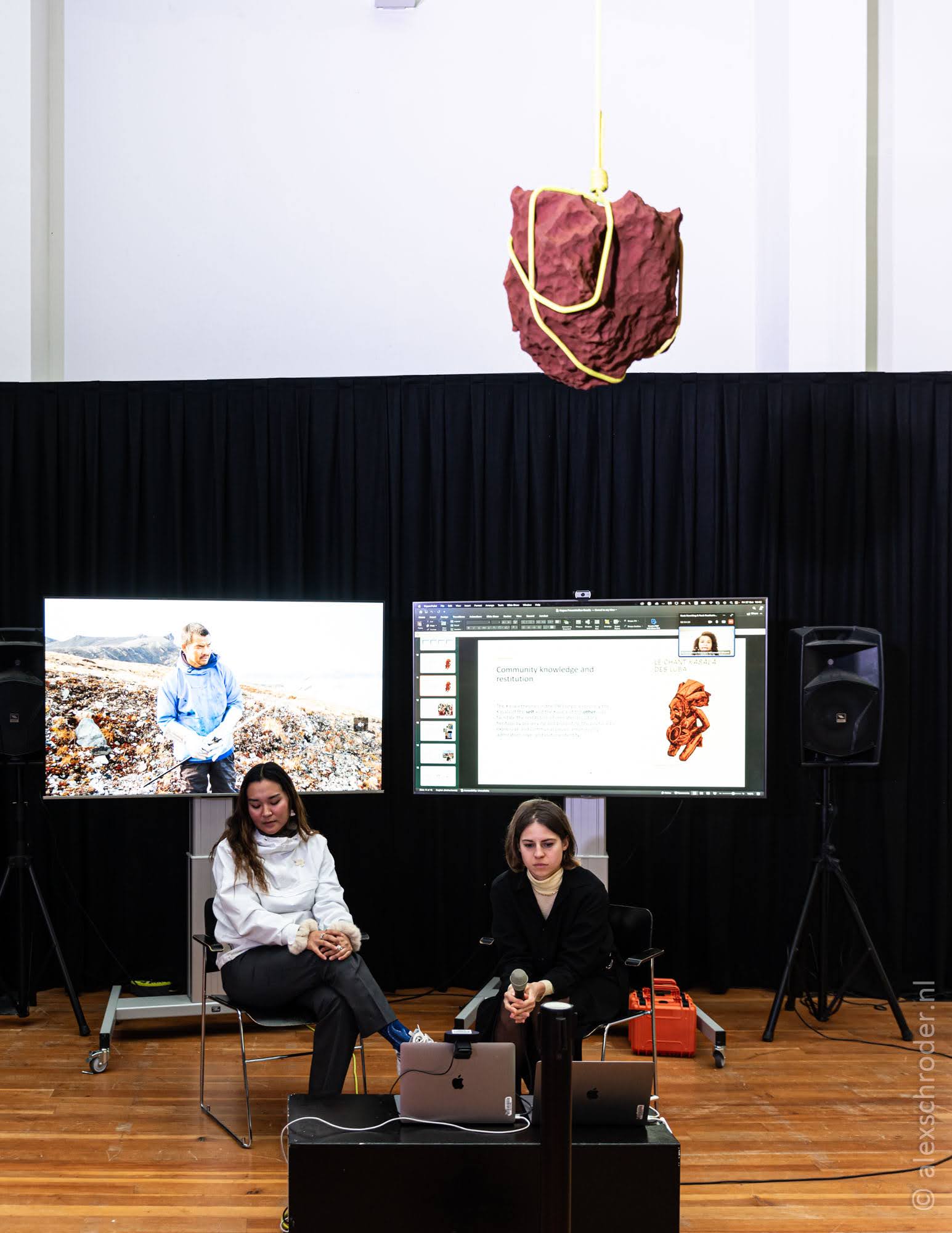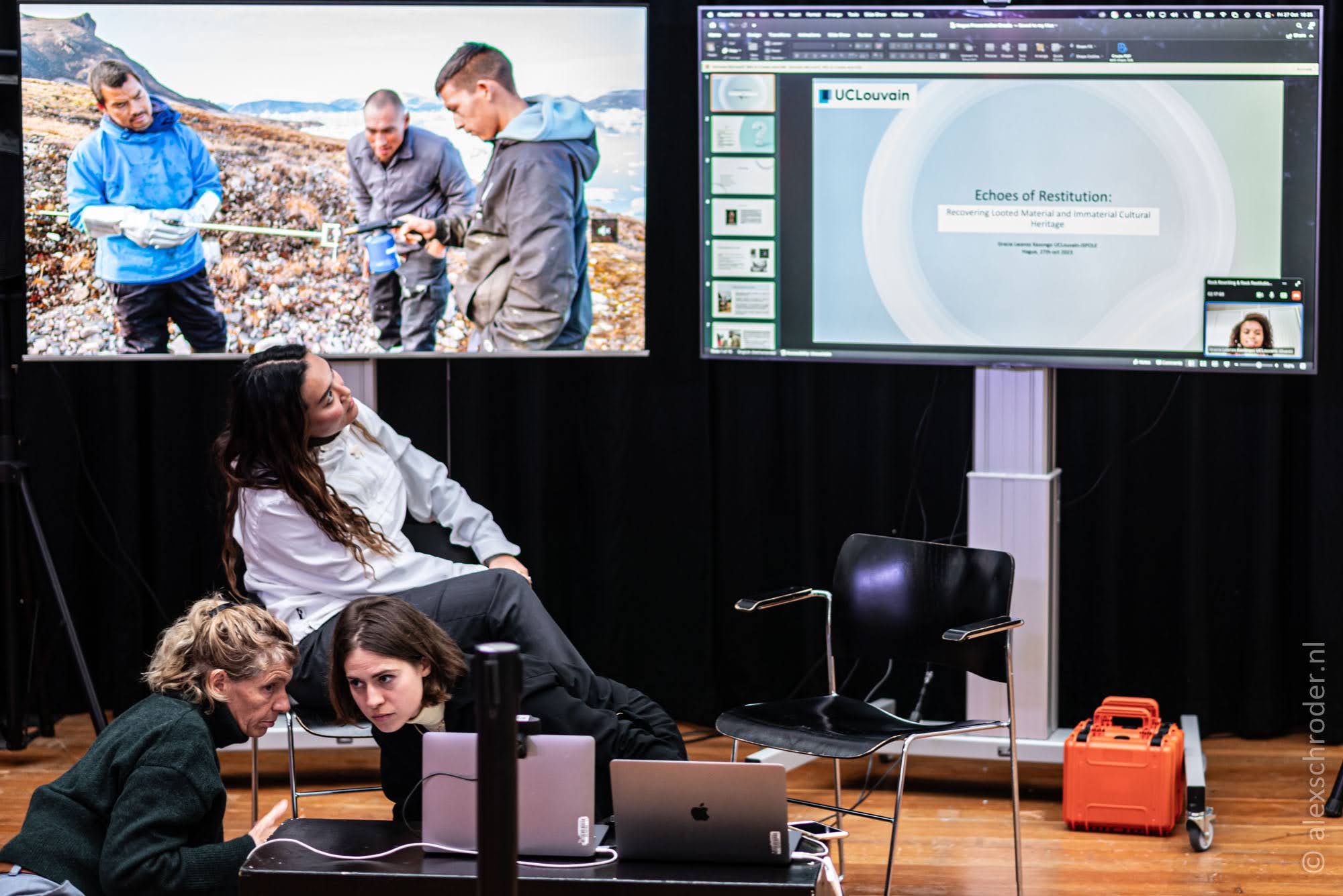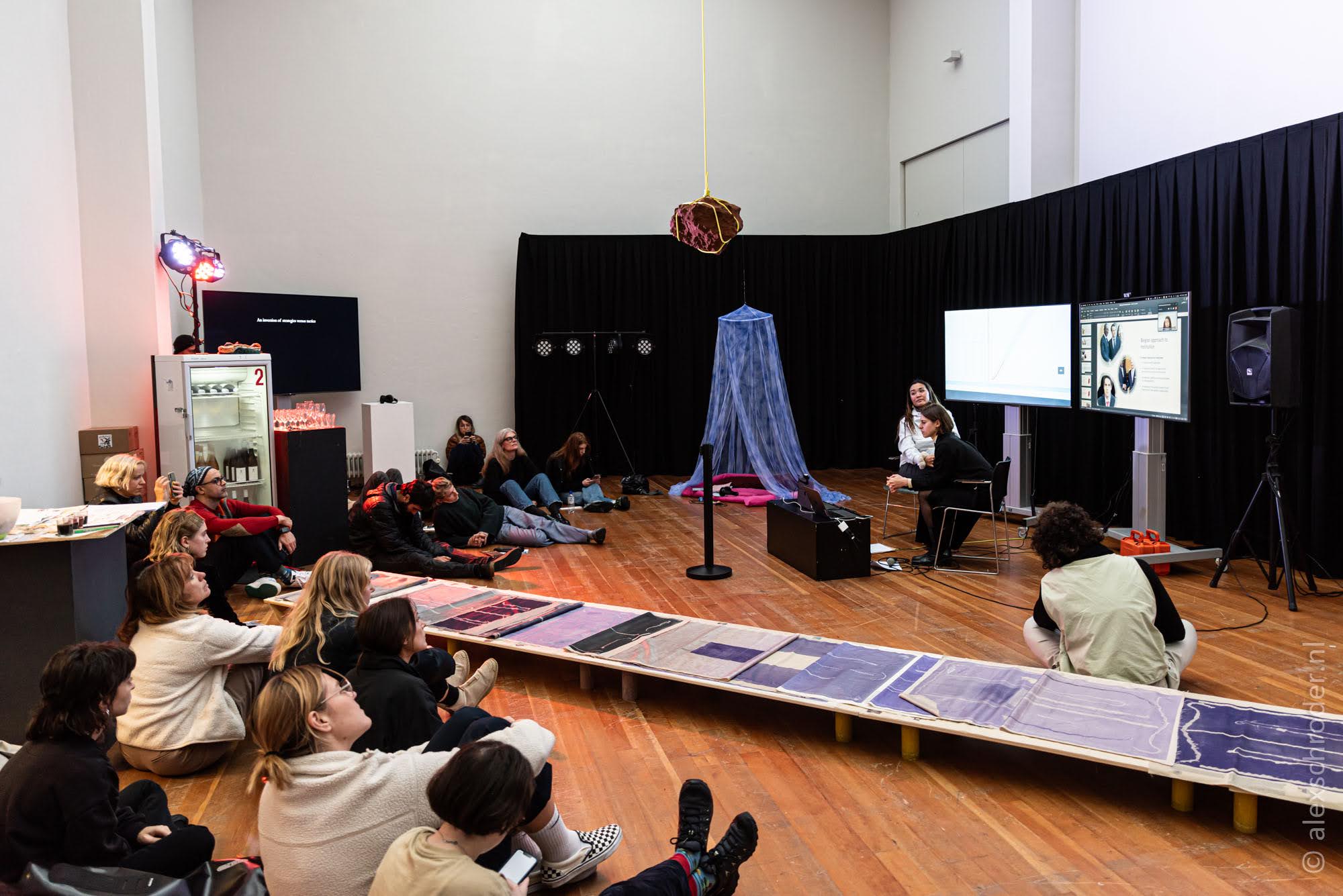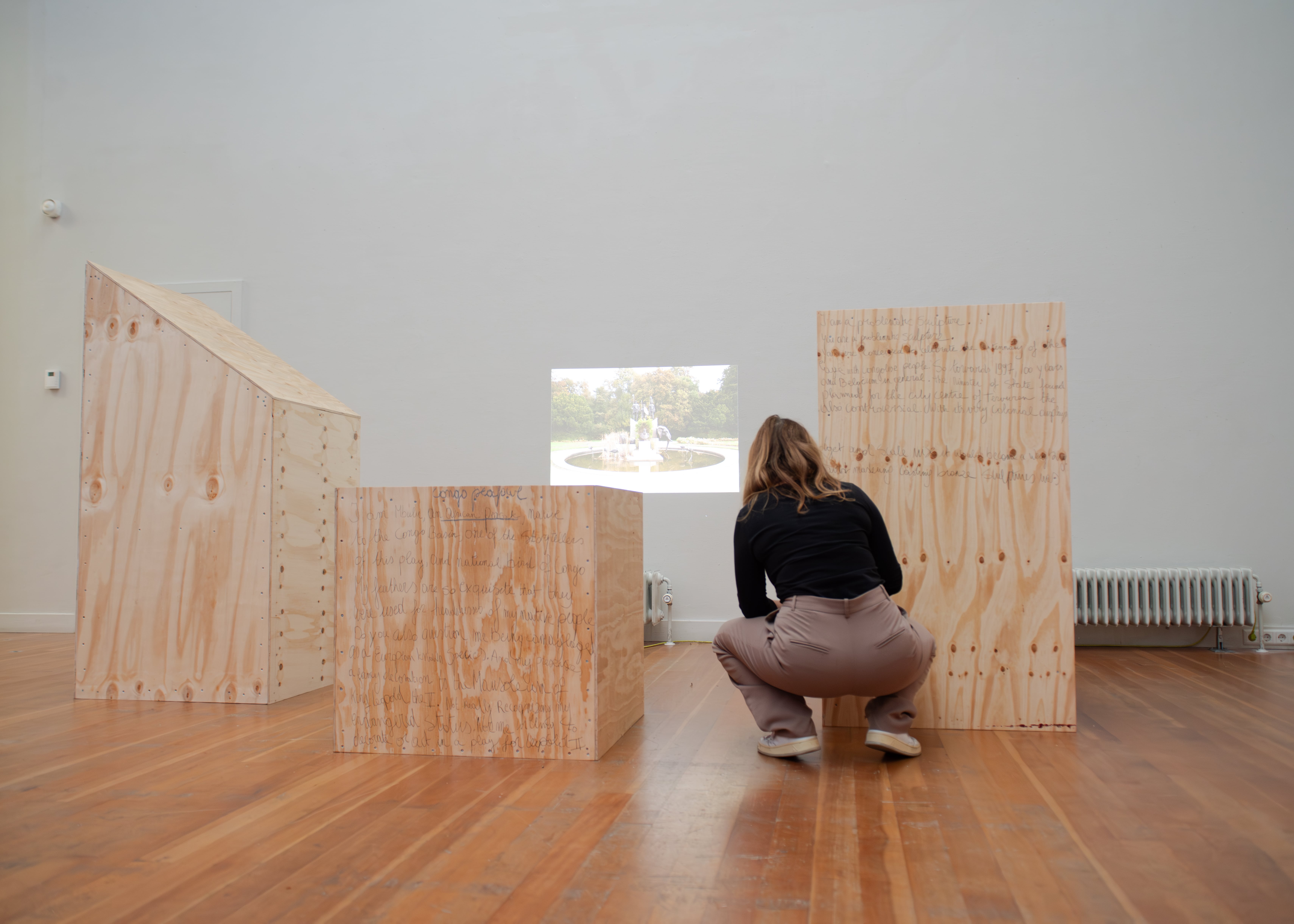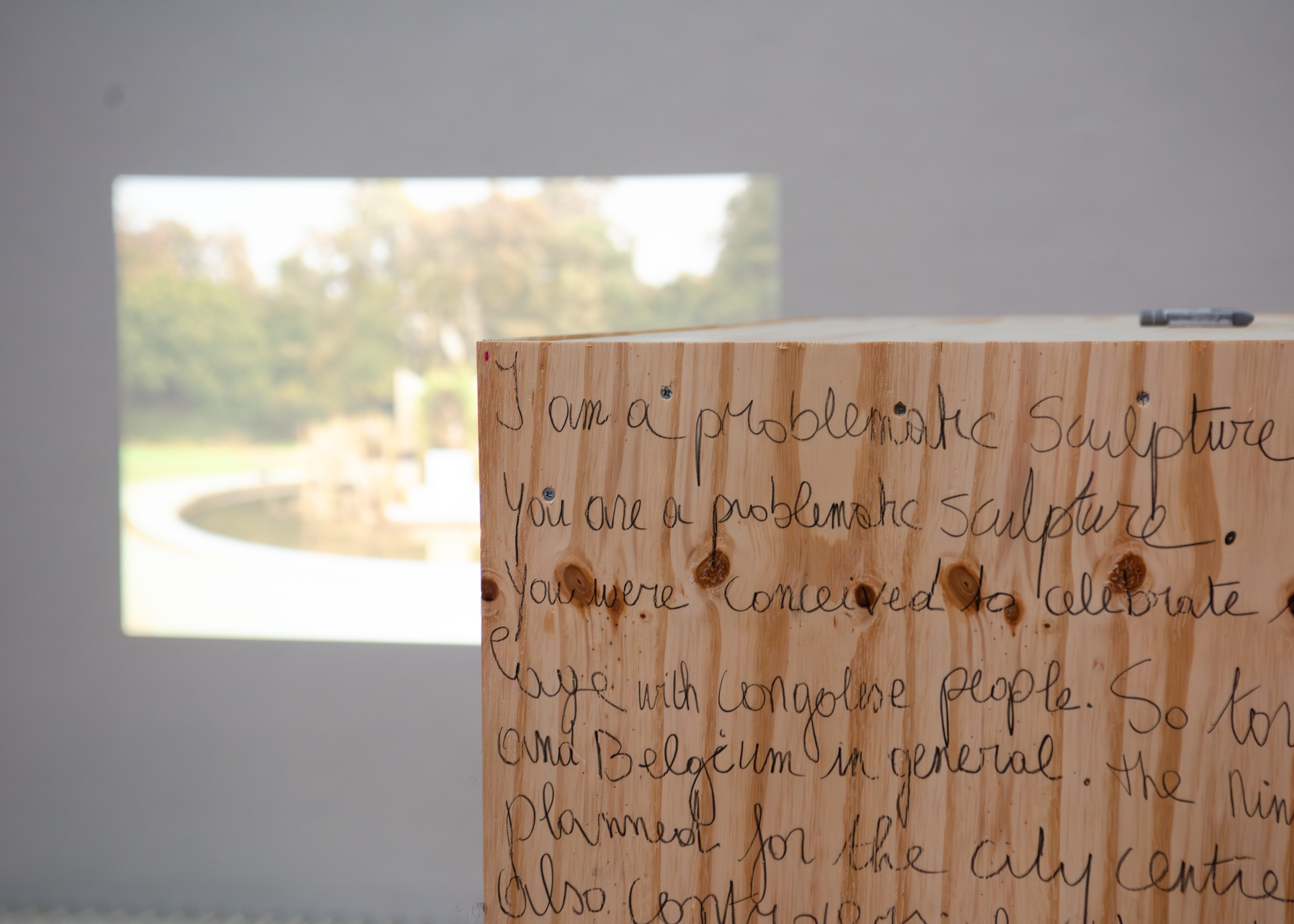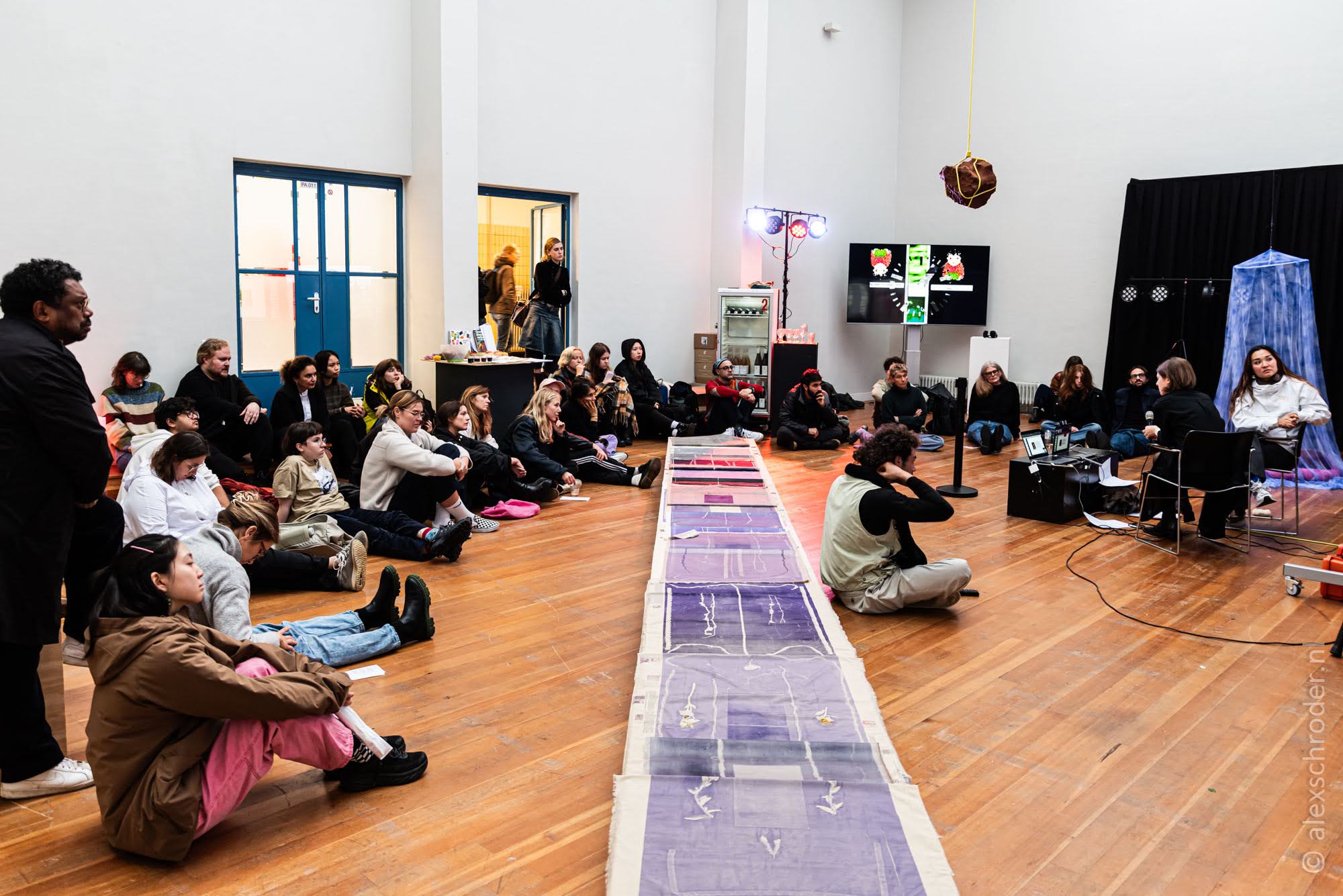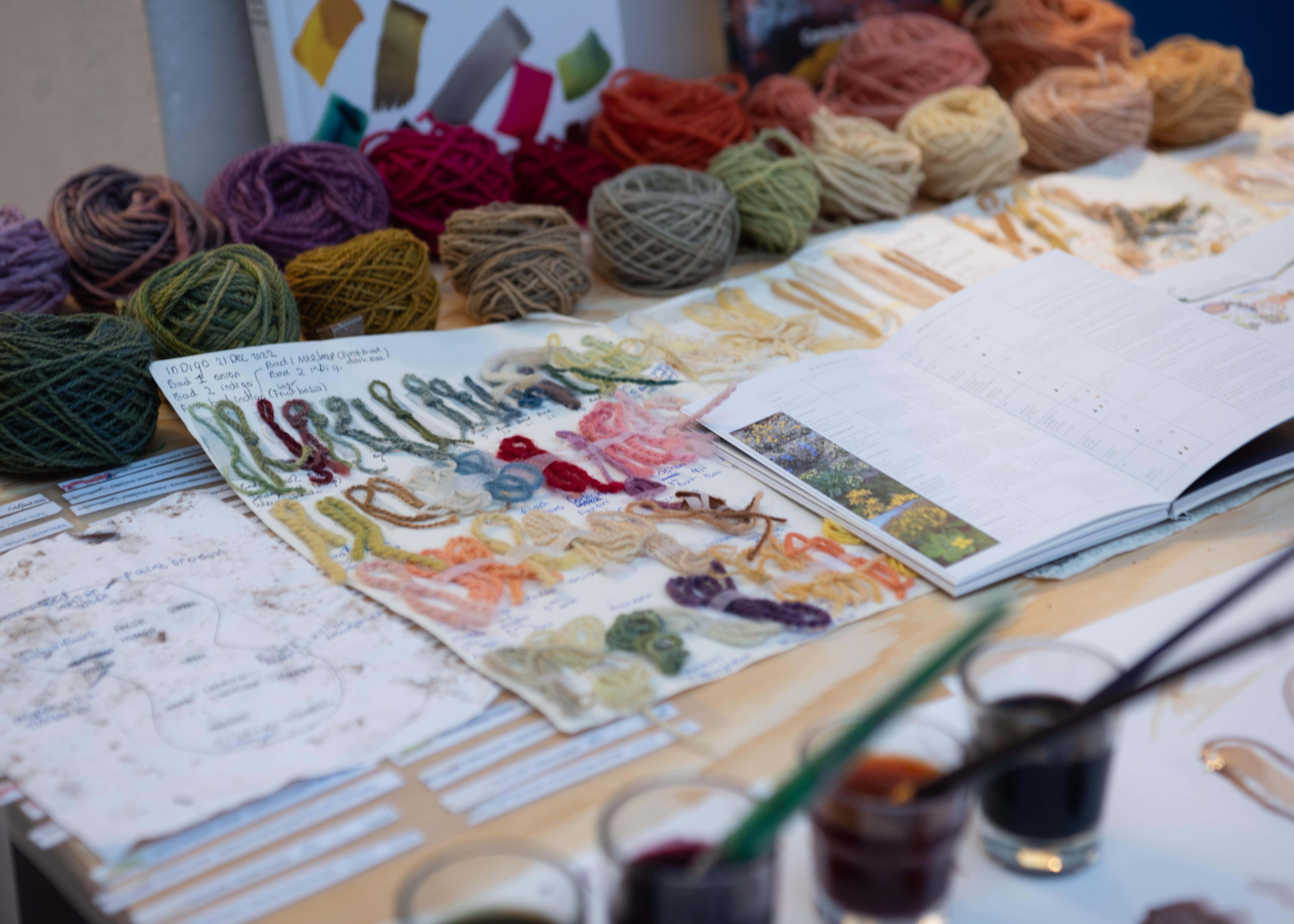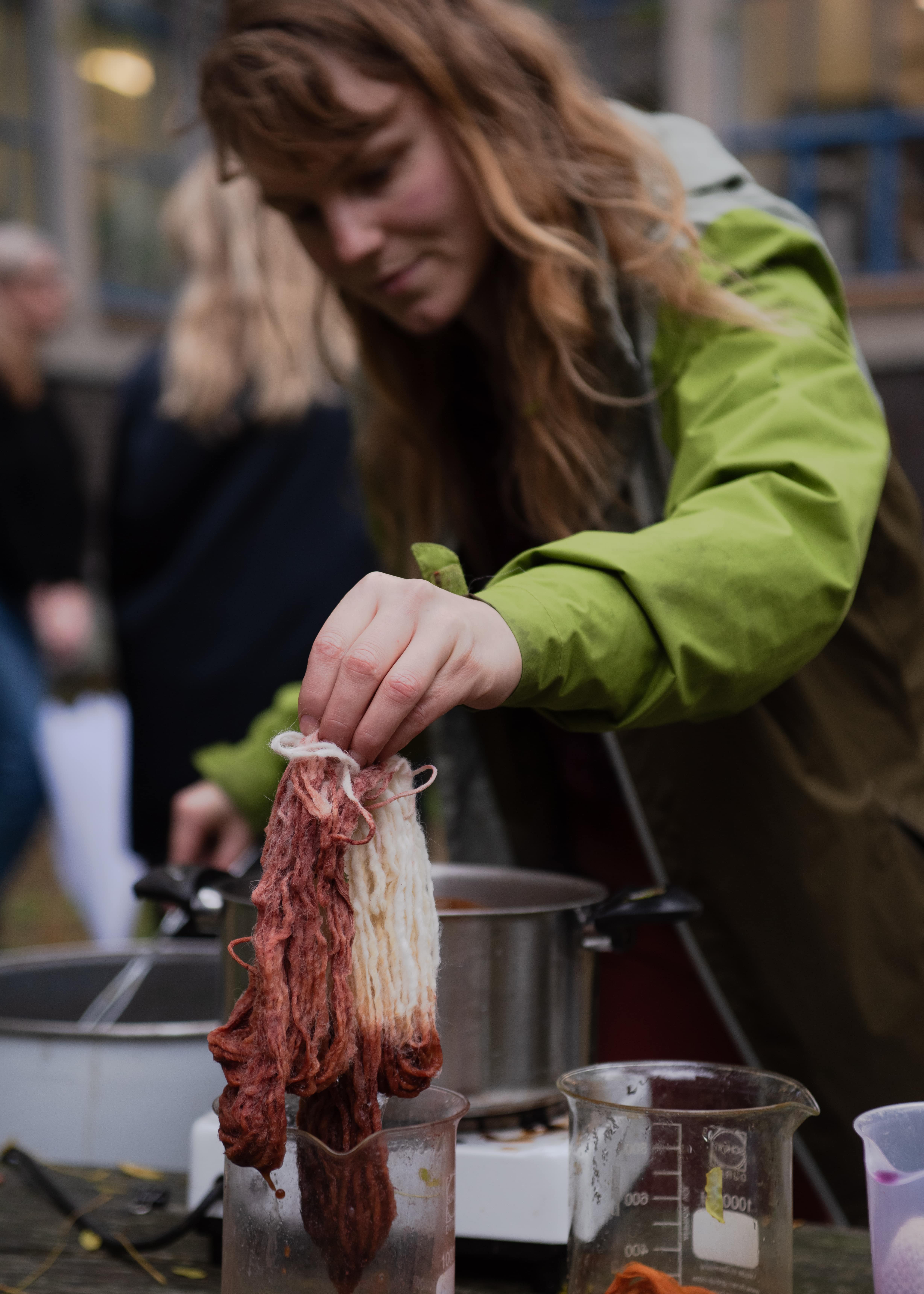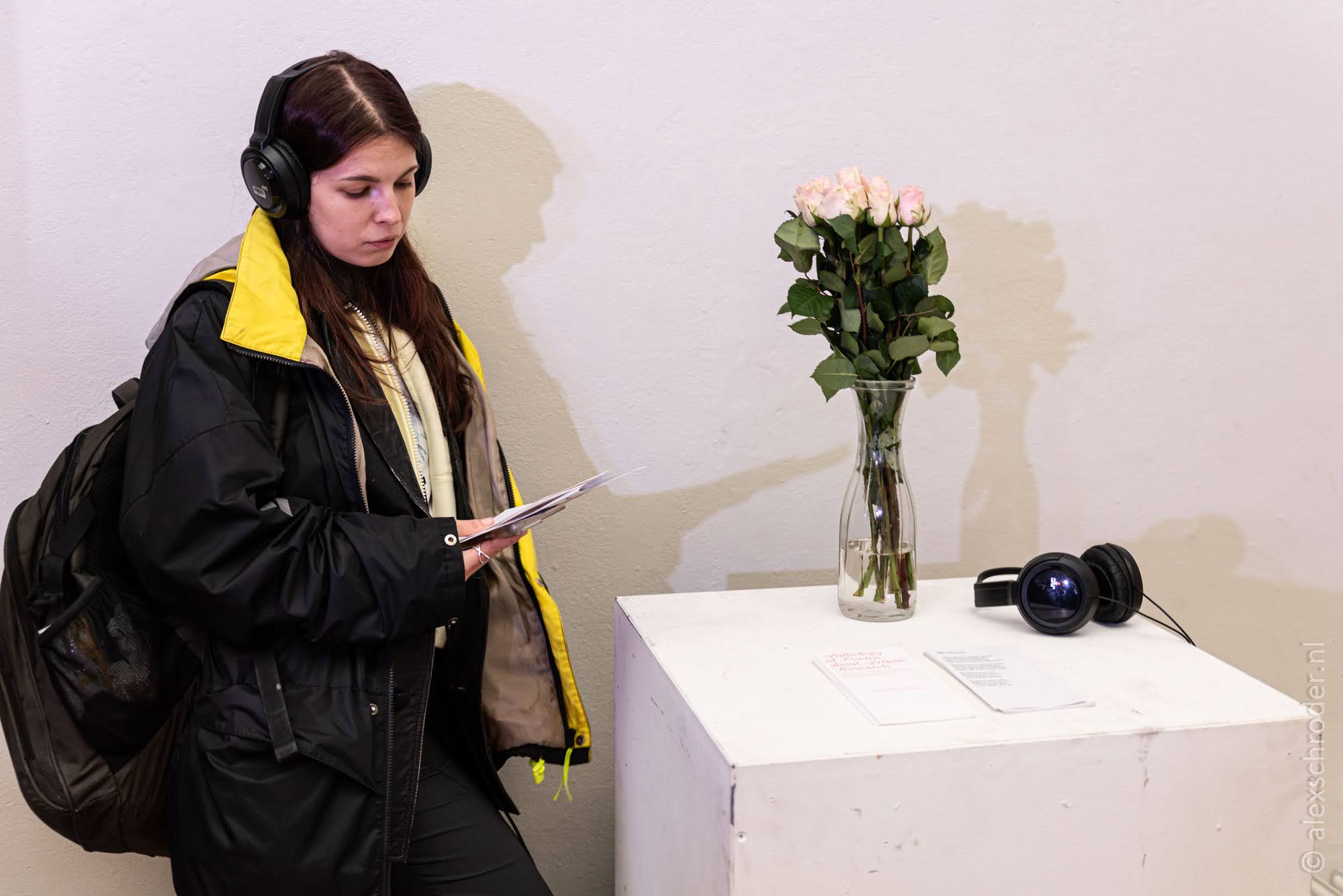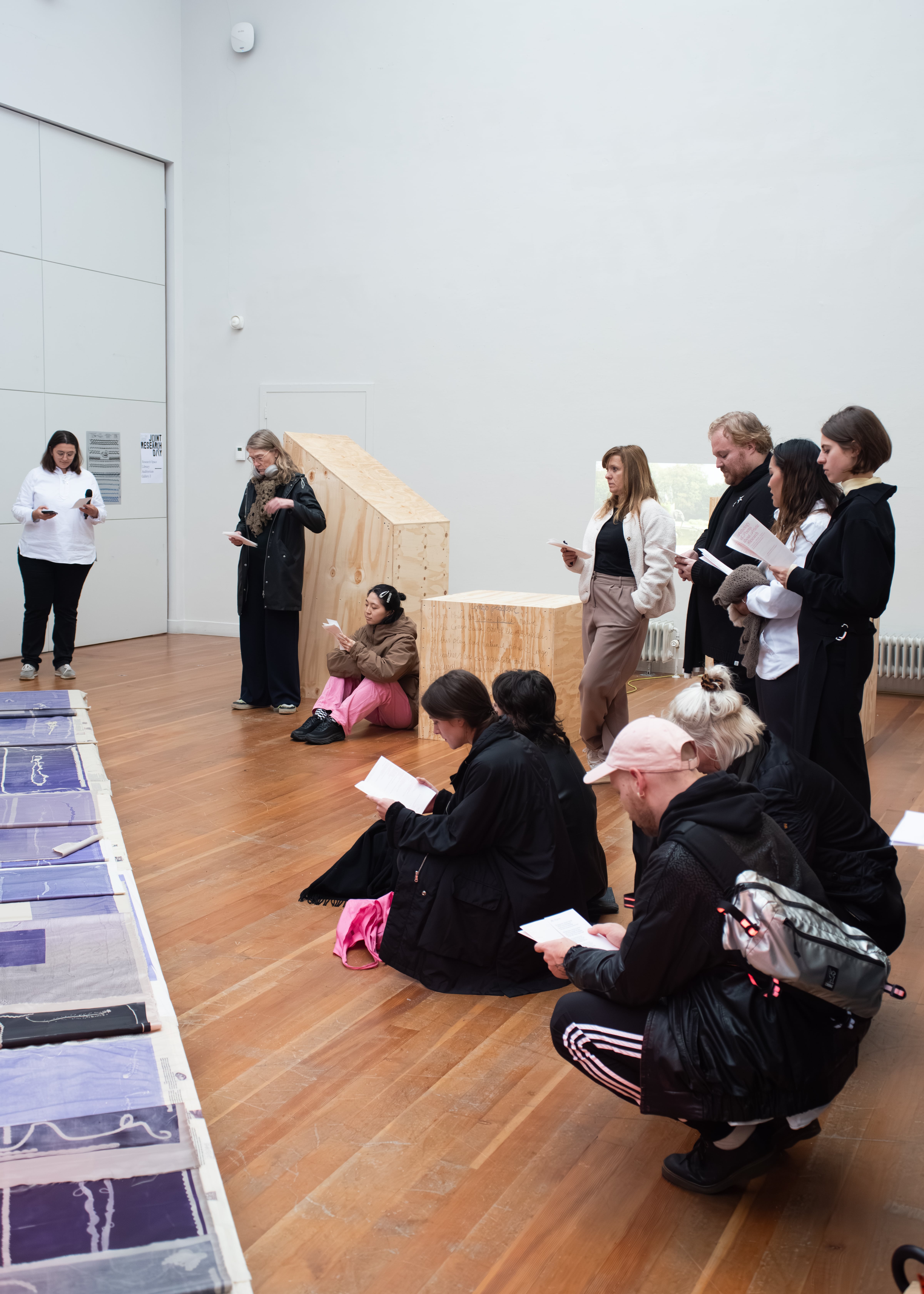Exhibition October 2023
Anke Haarmann
(2022-2024),
Anastasia Loginova
(2022-2023),
Elisabeth Rafstedt and Johanna Ehde (the Rietlanden Women's Office)
(2022-2024),
Erik Kluitenberg
(2022-2024),
Ingrid Grünwald & Maarten Cornel
(the Big Dialogue)
(2022-2024),
Sophie Allerding
(2022-2024),
Tatjana Macic
(2023-2024),
Wieneke Bremer
(2022-2023),
Winnie Koekelbergh
(2022-2023),
Zuzanna Zgierska
(2022-2024).
pictures © Alex Schröder
The exhibition presented a multifaceted approach to research, showcasing a diverse
array of methodologies and media. These included fabric, video, performance,
sculpture, and installation, which are positioned within a spatial relationship and
interpreted as research. This symposium of things invites us to consider the
various research positions at play.
Elisabeth Rafstedt and Johanna Ehde (the Rietlanden Women's Office) are graphic designers. Their monotype prints with sublimated type can be seen as a publication, but also as something different from a normal book. The prints are the latest result of their ongoing manifesto on collaborative graphic design. This research, writing and printing is about design methods, how they relate to those of earlier feminist collectives, the practice of ornamentation and the messy history of graphic design.
Winnie Koekelbergh has a background in art history, but in the context of the research group she has developed a more interventionist, hands-on approach to investigating and questioning colonial monuments. Her research approach is to dismantle a sculpture, reproduce it and talk to it in order to understand its political nature. She intervenes with this sculpture in a public space that has been retroactively decolonised in the hope of better understanding the complex nature of the work.
Erik Kluitenberg is a writer, curator and researcher on media and technology. He has developed an approach to research that he calls 'doing theory', understanding theory in a particular way because it deals with the formation of concepts. The subject of his research is tactical media, the fusion of art, media and activism or politics, and the problem of time in tactical media. The project originated from an academic and activist talk, developed into a linear essay, which he then transformed into a visual essay where the concepts interact with archival footage from the Tactical Media Files online archive.
Anastasia Loginova is an artist and curator. As a member of the research group, she became interested in the question of artistic research as such, exploring very personal approaches or understandings of artistic research. What began as a 'rational' approach of trying to define what artistic research is by interviewing artists and collecting their responses in the form of text was then abstracted to create poems by extracting phrases and words that gave the text new meanings outside of rational definition. Words were chosen for their acoustic properties or the way they came together on the page: The result is a mantra song - to be heard and sung.
Ingrid Grünwald & Maarten Cornel (the Big Dialogue) have a background in literature and philosophy. They see dialogue as a method of research, of discovering, testing, exercising the performativity of speech, of gathering, of producing meaning and of exchanging ideas. Their approach is both - a very empirical one, though grounded in philosophical & linguistic/communication theory. They facilitate different groups of students and tutors in different forms of conversation - open, perhaps, Socratic. In these conversations they try to find connection and understanding fordifferent perspectives in the hope of finding new knowledge and insights to change the current status quo and current understanding.
Wieneke Bremer is a textile designer. She is interested in colour and the dyeing of textiles. What kind of knowledge does an art academy have about colours, their origin, their production, their use? Wieneke Bremer's research laboratory has developed something very special: a garden. A garden for plants from which colours can be dyed. And this is where politics comes in: How do we implement such a research laboratory, who funds and supports a garden as a research laboratory? What research practices are we prepared to accept as research practices - gardening? What approaches to knowledge are we prepared to acknowledge? Is knowledge about plants that can be used for dyeing aesthetic knowledge, biochemical knowledge, agricultural knowledge about climate and weather and earthworms?
Sophie Allerding is an artist, radio activist and photographer. Her research question is: How can role-playing serve as a method of inquiry and a tool for accessing embodied knowledge that might otherwise go unrecognised within the constraints of our everyday personas? She approaches her research through three different methods: Firstly, by participating in role-playing games to observe and reflect on the knowledge produced both individually and within group dynamics. Secondly, by designing role-plays, often in collaboration with other artists, to explore the knowledge generated within the group in relation to specific thematic contexts proposed by the designers. Finally, by hosting a series of radio shows in which she invites fellow artists who use role-play in their artistic practice and research. One could enter Sophie's world of role-playing in a tent for shelter.
Zuzanna Zgierska is an artist working at the intersection of art science, transmedia storytelling and digital culture. Her research, titled Out of Focus, is a case study of meteorite fragments extracted from Inugguit Nunaat in Greenland by Danish colonists and 19th century North Pole explorers. Her research approach combines fieldwork, participatory video production and academic debate.
pictures © Alex Schröder
